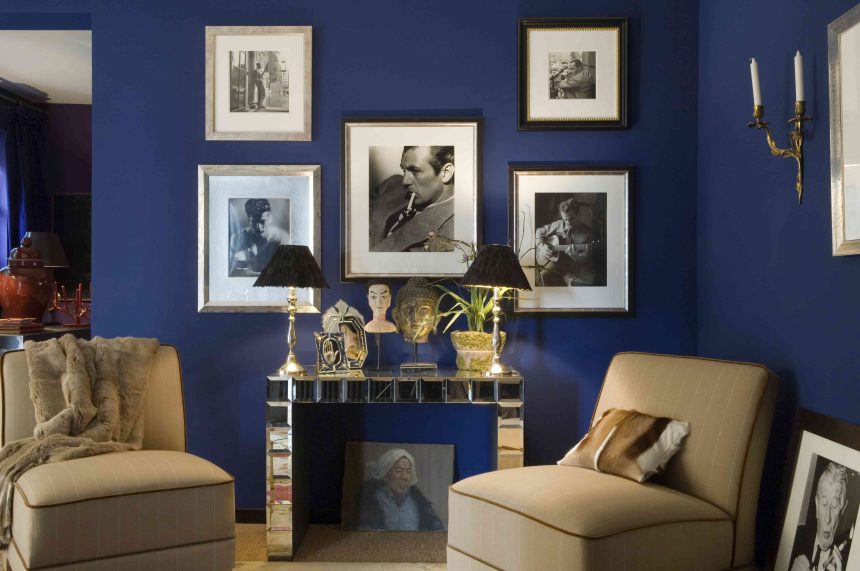White and pastel hues have long been trusted for making spaces feel open and airy. On the other end of the spectrum, darker, more dramatic hues often shrink a room, making it feel small. That’s not always a bad thing—sometimes this can create a more grounded, defined atmosphere—but often it can make a space feel moody and cramped.
This dilemma is especially apparent in the living room, which is an area that most will want to feel open, spacious, and welcoming to guests. We spoke to interior designers about the six colors that will make your living room look small—and that you may want to use sparingly, depending on the scenario.
Olive Green
Little Greene
Green is the new gray, says Kristin Kurko, director of interior design firm Rocco Revolution. Unlike the cold, sterile feel of gray, however, green brings an organic, grounded quality to a room, making it feel more inviting and tranquil. “Olive green, in particular, connects the indoors to nature, creating a calming, restorative atmosphere,” she says.
Green can work beautifully to create a sense of enclosure. However, balance is important, and too much or the shade can quickly leave a space feeling claustrophobic. Kurko suggests soft, muted shades like sage or olive for a soothing effect—a richer emerald will add a touch of drama.
Lavender
Purple is a color with a split personality—in the best way possible. Depending on how it’s used, it can bring a sense of calm or dial up the drama in a room.
Lavender is a tricky color, as it can make a space feel cozier, but also less roomy. “The overall coziness depends on how you style the rest of the room,” says Kurko. Pair it with soft textures and wool rugs to lean into the close-quarters, snug feel, or add modern elements for something more fresh and sophisticated.
Navy Blue
Getty / nicolamargaret
Deep navy is a standout choice for adding a sense of structure and focus to a living room. “It has this unique ability to transform a large, impersonal space into one that feels polished and cohesive,” says architect and interior designer Daniel Joseph Chenin.
With the wrong accessories, however, navy can look oppressive and overbearing, creating a cramped atmosphere. Instead, if you love the color, pair it with warmer, cozier layers. Try incorporating jewel-toned velvet upholstery and natural wood details, like oak shelving, to introduce warmth and offset the color’s cool undertones. You can also layer in accessories like woven throw blankets, patterned rugs, or cushions with subtle textures.
Burgundy
Burgundy might sound like a daring choice for a living room—and it is—but that can be part of its charm. This deep, rich shade adds instant drama and warmth, but it can also easily take over if you’re not careful.
“To keep it from feeling too intense, balance it with plenty of natural light and lighter accents,” says interior designer Kellie Richardson, director of Kurved by Design. Think light-colored furniture, bright textiles, or even sheer curtains, which will all help soften the look.
Dark Gray
Gray can be a good choice for altering a living room’s atmosphere—but it does come with some considerations. It absorbs light, for starters, which can make a room feel more enclosed and less open.
To avoid a cold, claustrophobic vibe, Richardson recommends pairing gray walls with ample natural light and warm-toned accents, like wood furniture or gold décor. On the plus side, as a versatile neutral, gray pairs well with nearly any style or color, making it easy to mix and match design elements.
Chocolate Brown
Courtesy of Sherwin-Williams
Deep brown shades, especially rich chocolate brown, can infuse your room with a dense, earthy feel. However, this color also makes the ceiling feel lower, according to Richardson.
To keep the room from feeling “too dark and cramped,” Richardson advises plenty of light. “Whether it’s natural light or some well-placed lamps—that way, you get the comforting appeal without sacrificing openness,” she says.






